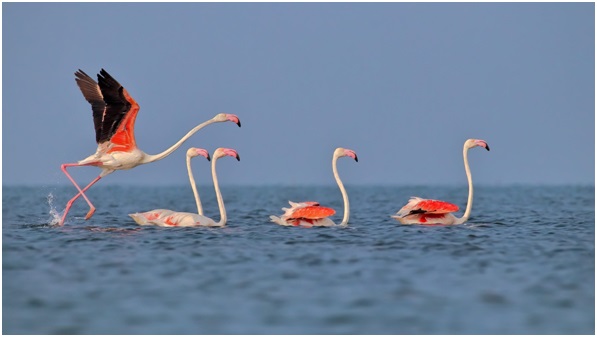Migratory Birds Arrive in Odisha’s Chilika Before Winter (DownToEarth)

- 11 Oct 2023
Why in the News?
Migratory birds have started their annual journey to Chilika Lake—India’s largest waterbird habitat in Odisha — ahead of winter this year.
About Chilika Lake:
- Chilika Lake is the largest brackish water lake and a shallow lagoon with estuarine character spread across the districts of Puri, Khurda and Ganjam in the state of Odisha in eastern India.
- It is considered to be the largest lagoon in India and is counted amongst the largest lagoons in the world.
- It is the largest wintering ground for migratory waterfowl found anywhere on the Indian sub-continent.
- It is one of the hotspots of biodiversity in the country, and some rare, vulnerable and endangered species listed in the IUCN Red List of threatened Animals inhabit the Lake area for at least part of their life cycle.
- On account of its rich bio-diversity, Chilika Lake was designated as a "Ramsar Site", i.e. a wetland of International Importance.
- The Nalaban Island within the lake is notified as a Bird Sanctuary under the Wildlife (Protection) Act, 1972.
- The National Wetlands, Mangroves and Coral Reefs Committee of the Ministry of Environment & Forests, Government of India, have also identified the lake as a priority site for conservation and management.
- The Lake is a highly productive ecosystem, with rich fishery resources.
- The rich fishing grounds sustain the livelihood of more than 0.2 million fisherfolk who live in and around the lake.
- It has a great heritage value and maritime trade to the far east countries used to take place from here.
- It is the largest winter ground of migratory birds in the Indian sub-continent and home to more than 150 highly threatened Irrawaddy dolphins, which is the largest lagoonal population globally.
- It supports some of the largest congregation of migratory birds from large parts of Asia, particularly during the winters that arrive from as far as the Caspian Sea, Lake Baikal, Aral Sea, remote parts of Russia, Kirghiz steppes of Mongolia, Central and South East Asia, Ladakh and the Himalayas to feed and breed in its fertile waters.
